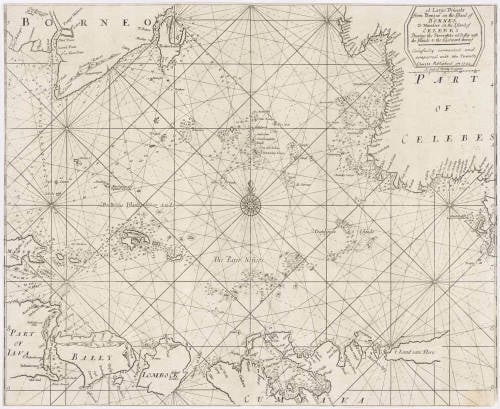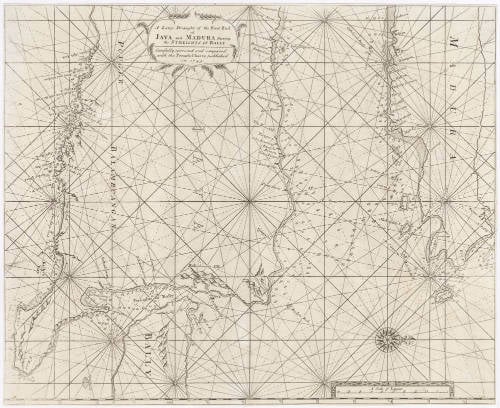Leen Helmink Antique Maps
Old books, maps and prints by Samuel Thornton
Samuel Thornton (c.1665-1712)
Samuel Thornton: Navigating the East with Cartographic Precision
In the annals of 17th and early 18th century cartography, Samuel Thornton stands out not just as a prolific mapmaker, but as a vital link in a family tradition of maritime charting. Born in 1665 to John Thornton, a respected hydrographer and map publisher, Samuel inherited both his father's business acumen and passion for cartography.
Samuel Thornton became one of the most distinguished mapmakers of his era, particularly known for his contributions to the English East India Company (EIC) in the early 18th century. Living in a period when global exploration and maritime trade were expanding rapidly, Thornton's expertise and craft played a pivotal role in facilitating navigation, trade, and expansion for England.
The EIC, established in 1600, was one of the world's most powerful trading companies, and by the 18th century, it commanded vast territories in the East, including parts of the Indian subcontinent. The company's success relied heavily on the accuracy and detail of maritime charts and maps. This is where Samuel Thornton's skills shone. His dedication to precision, combined with an artistic flair, made his maps not only practical navigational tools but also works of art.
Many of Thornton's maps focused on the seas and coastlines of Asia. They often provided intricate details of the coasts, ports, and anchorages, invaluable information for the sea captains and merchants who were venturing into unfamiliar waters. At a time when the slightest navigational error could result in shipwrecks or lost cargo, Thornton's meticulous work undoubtedly saved many lives and fortunes.
While his primary focus was on Asian waters, Thornton's portfolio was not limited to this region. He also produced maps of other parts of the world, often collaborating with other cartographers and integrating the latest discoveries into his work. As a result, his maps were continuously updated, reflecting the evolving knowledge of the world during this Age of Exploration.
At a time when the British Empire was expanding its reach across the globe, Samuel Thornton's maps became essential tools for exploration, conquest, and commerce.
The English Pilot, for which Samuel is best remembered, is a series of sea atlases that aimed to provide comprehensive navigational guides for English mariners. First published by his father, John Thornton, the series was taken over and expanded upon by Samuel after John's death in 1708. These atlases, with their detailed charts and sailing directions, were indispensable to sailors, and they became the standard navigational texts for English mariners for several decades.
Samuel's dedication to detail and accuracy is evident. He went to great lengths to ensure that his charts were as precise and up-to-date as possible. In a time when global exploration was rapidly expanding, and the New World was still being charted, the importance of accurate and accessible maps cannot be overstated.
Beyond "The English Pilot," Samuel also produced a myriad of other maps, many of which focused on the coasts and waters of Asia, reflecting the growing importance of the East India trade. These maps, like those in "The English Pilot," were renowned for their accuracy and detail, making them invaluable tools for the merchants and captains of the English East India Company.
Today, original copies of Thornton's maps are highly prized by collectors and historians. They are a testament to the craft and science of map-making during one of the most dynamic periods in world history and stand as a tribute to a man whose work charted the course of empires.

